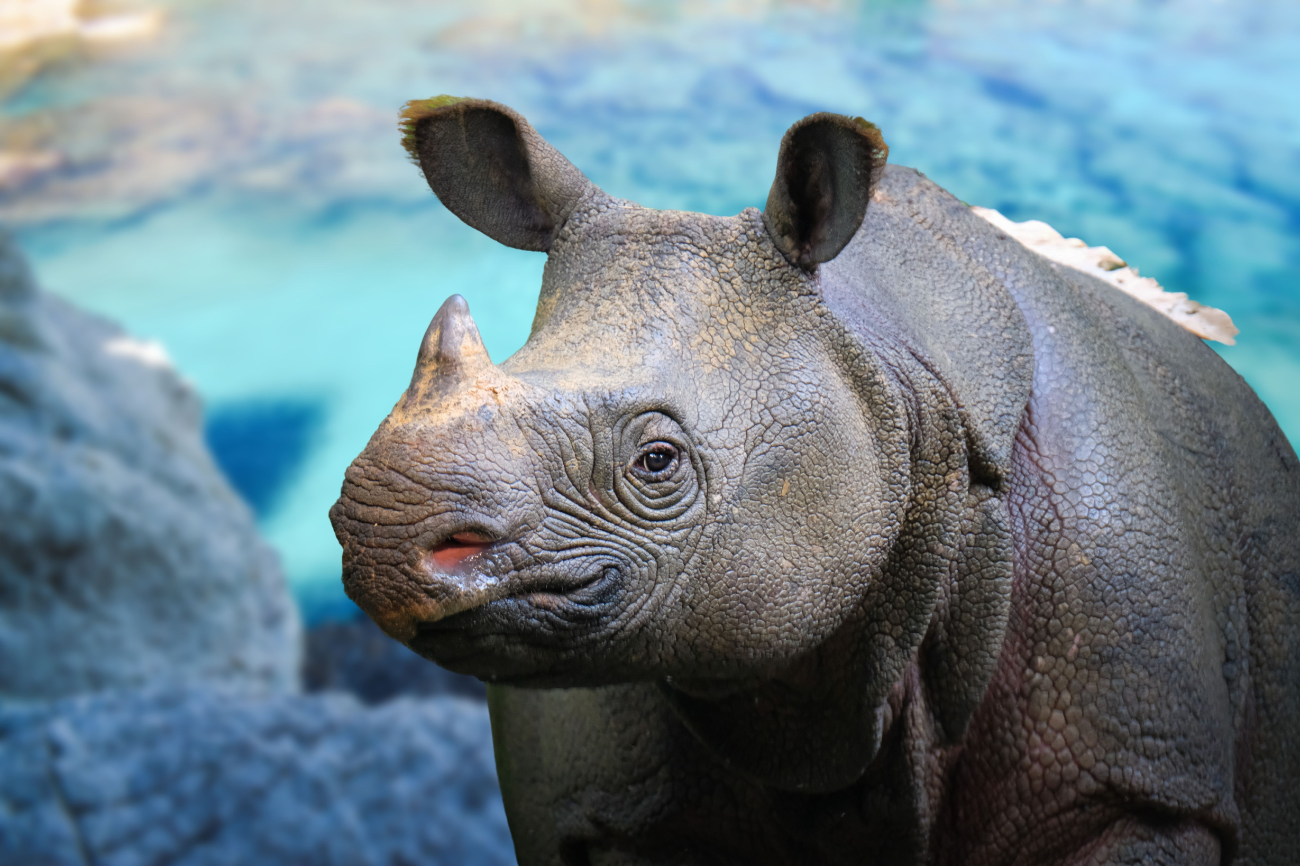JAVAN RHINO

Disclaimer: Copyright infringement not intended.
Context
- Indonesian officials have reported the sighting of a new Javan rhino calf in Ujung Kulon National Park, home to the last surviving population of the critically endangered species.
- The Indonesian government puts the Javan rhino’s current population at about 80 animals, with an average of three new calves added per year.
- Its past estimates, however, have counted rhinos that have disappeared (some of which were confirmed dead), throwing into question whether the species’ population trend is really increasing or even declining.
Details
- The Javan rhinoceros (Rhinoceros sondaicus) is one of the rarest and most critically endangered large mammals on the planet.
Taxonomy and Classification
- The Javan rhinoceros belongs to the family Rhinocerotidae, which includes five extant rhino species.
- It is classified under the genus Rhinoceros and is scientifically known as Rhinoceros sondaicus.
Distribution
- Historically, the Javan rhino inhabited several Southeast Asian countries, including Indonesia, Malaysia, Thailand, and Myanmar.
- However, its current distribution is limited to the Ujung Kulon National Park in West Java, Indonesia.
Physical Characteristics
- Javan rhinos are smaller in size compared to their African counterparts. They have a compact and stocky build.
- They are characterized by a single horn, which is relatively short and can grow up to about 10 inches (25 centimeters) in length.
- Their skin is covered in loose folds, giving them a unique appearance.
- Adult Javan rhinos typically weigh between 900 and 2,300 kilograms (2,000 to 5,000 pounds).
Behavior and Habitat
- Javan rhinos are solitary and predominantly crepuscular or nocturnal, meaning they are most active during dawn and dusk.
- They are herbivores, primarily feeding on a variety of plant species found in their habitat.
- Their preferred habitat consists of dense tropical rainforests and grasslands.
Conservation Status
- The Javan rhinoceros is critically endangered, with a very small and declining population.
- Poaching for their horns and habitat loss due to human activities are the primary threats to their survival.
- The population is estimated to be fewer than 80 individuals, making it one of the rarest large mammals on Earth.
Conservation Efforts
- Various conservation organizations and governments are working tirelessly to protect and conserve the Javan rhinoceros.
- The Ujung Kulon National Park in Indonesia is a crucial stronghold for the species, and it has been designated as a UNESCO World Heritage Site.
- Anti-poaching measures, habitat protection, and community engagement programs are integral to their conservation.
Conclusion
The Javan rhinoceros is an iconic and critically endangered species facing numerous threats. Efforts to protect and conserve this remarkable creature are essential to ensure its survival and maintain biodiversity in its habitat.
MUST READ ARTICLES:
https://www.iasgyan.in/daily-current-affairs/rhino-48
|
PRACTICE QUESTION Q. Which of the following statements about the Javan rhinoceros (Rhinoceros sondaicus) is/are correct? 1. It is primarily found in Malaysia. 2. Javan rhinos have a single horn, which can grow up to about 10 inches in length. 3. Their preferred habitat includes the savannas of Africa. Select the correct option: A.1 only B.1 and 3 only C.1 and 2 only D.2 only Answer: D) |





1.png)
